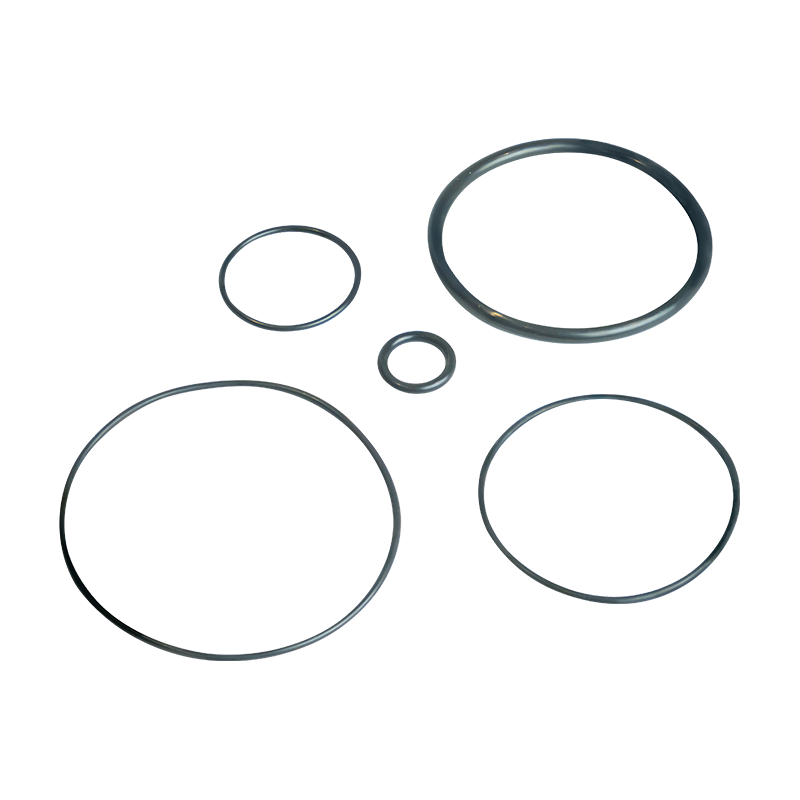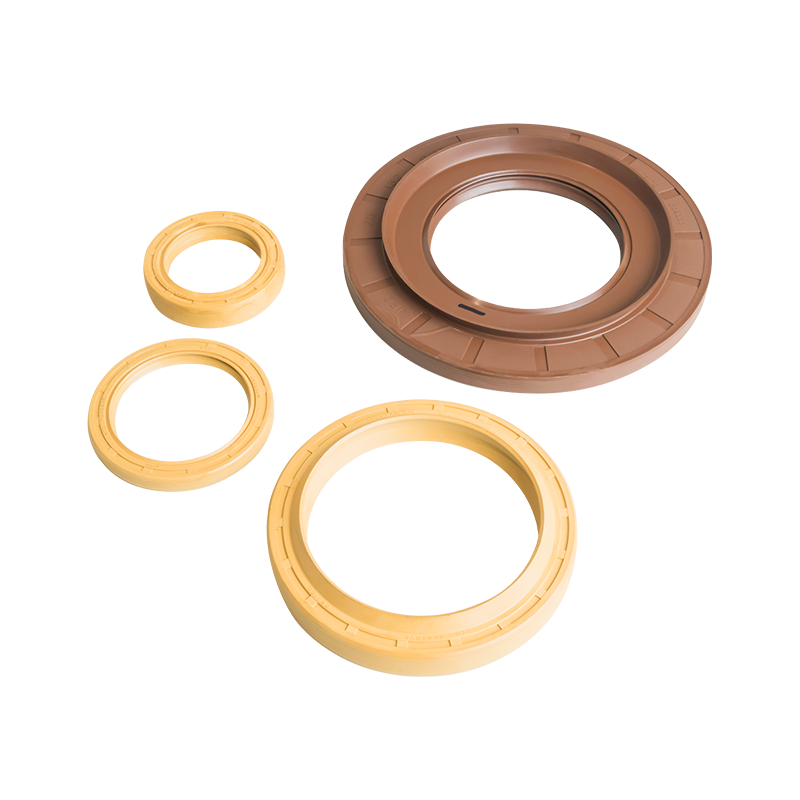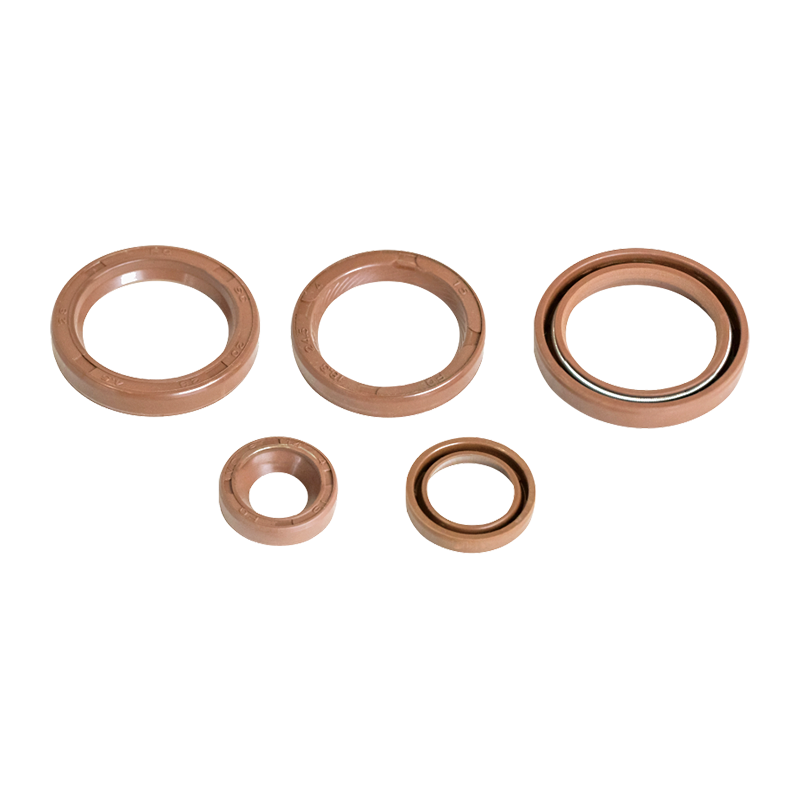How to Identify High-Quality vs. Low-Quality Red Silica Gel O-Rings?
Introduction: The Critical Importance of Quality in Sealing Components
In the vast and intricate world of industrial sealing, the selection of the right component is not merely a matter of procurement but a fundamental decision impacting safety, efficiency, and total cost of ownership. Among the myriad options, red silica gel o-ring seals have carved out a vital niche, prized for their stability across extreme temperatures and their suitability for sensitive applications. However, the market for these seals is a spectrum, ranging from exceptionally engineered products to dangerously substandard imitations. The visual similarity between high-quality and low-quality red silica gel o-ring seals can be deceiving, making it difficult for buyers and engineers to make an informed choice. A poor selection, driven solely by initial cost savings, can lead to catastrophic seal failure, unplanned downtime, product contamination, and significant financial loss.
Understanding the Base Material: More Than Just Color
The first and most crucial differentiator between high and low-quality red silica gel o-ring seals lies in the raw material itself. True silica gel, more accurately termed silicone rubber, is a synthetic elastomer known for its inertness and stability. The characteristic red color is not merely cosmetic; it is often an indicator of the specific compound and its properties.
High-quality red silica gel o-ring seals are manufactured from a consistent, high-purity silicone polymer. This virgin material is compounded with specific additives to enhance its properties, such as reinforcing fillers for strength and pigments for consistent coloration. The key here is the integrity of the base polymer. A premium compound will exhibit a uniform, deep red color throughout the cross-section of the seal. It is formulated to meet stringent international standards, ensuring batch-to-batch consistency in its chemical and physical properties. The material is designed to perform predictably under stress, maintaining its elastomeric properties without becoming brittle or overly soft.
Low-quality red silica gel o-ring seals, in contrast, are often produced using recycled or off-specification silicone. To cut costs, manufacturers may blend virgin polymer with regrind material or use lower-grade fillers. This practice immediately compromises the material’s performance. The visual telltale signs can include an uneven color, a mottled appearance, or a dull, non-uniform hue. Furthermore, some unscrupulous suppliers may use colored EPDM or other inferior elastomers and dye them red to mimic the appearance of silicone. These materials lack the high-temperature resistance and chemical inertness of genuine silicone rubber. The use of inappropriate pigments can also be problematic; non-thermally stable pigments can degrade and burn off at elevated temperatures, causing the seal to lose its color and, more importantly, its intended properties. When evaluating material quality, one must look for documentation of the compound’s formulation and its compliance with recognized material standards.
Physical Properties and Performance Characteristics: The Proof is in the Testing
While appearance offers initial clues, the definitive assessment of red silica gel o-ring seals comes from evaluating their physical and performance characteristics. These properties are quantifiable and are typically verified through standardized testing.
Key Performance Indicators of High-Quality Seals:
- Temperature Resistance: This is a hallmark of silicone. Premium red silica gel o-ring seals consistently operate in a range from approximately -60°C to 225°C (-76°F to 437°F). They resist hardening and cracking at low temperatures and do not rapidly degrade or become tacky at continuous high temperatures. Inferior seals will show significant compression set, shrinkage, or cracking after exposure to their advertised temperature limits.
- Compression Set Resistance: This measures a seal’s ability to return to its original shape after being compressed for an extended period. A high-quality seal has excellent compression set resistance, meaning it maintains a tight seal over its service life without permanently deforming. A low-quality seal will take a “set,” leading to a loss of sealing force and eventual leakage. This is a critical failure mode in static sealing applications.
- Tensile Strength and Elongation: Tensile strength indicates how much stress the material can withstand while being stretched, while elongation at break measures how far it can stretch before tearing. High-quality seals balance good tensile strength with high elongation, indicating a tough, durable material. Poor-quality seals often have low elongation, making them brittle and prone to nicking or tearing during installation.
- Tear Resistance: Related to elongation, tear resistance is crucial for the practical handling and installation of o-rings. A premium seal can withstand minor abrasions and nicks without propagating a tear that would lead to failure. Substandard materials often have very low tear strength, making them easily damaged.
The following table summarizes the typical property differences:
| Property | High-Quality Red Silica Gel O-Ring Seals | Low-Quality Red Silica Gel O-Ring Seals |
|---|---|---|
| Temperature Range | Stable from -60°C to 225°C | Performance degrades significantly at lower high-temp thresholds |
| Compression Set | Excellent (Low set value) | Poor (High set value, leads to leakage) |
| Elongation at Break | High (Typically 400% to 700%) | Low (Brittle, prone to tearing) |
| Tear Strength | Good to Excellent | Poor, easily nicked during installation |
| Aging Resistance | Excellent resistance to ozone and UV weathering | Rapid degradation, cracking, and softening |
When sourcing these components, it is prudent to request certified test reports from the supplier that validate these physical properties. Reliable manufacturers will have this data readily available.
Manufacturing Integrity and Dimensional Consistency
The quality of the raw material is only one part of the equation. The manufacturing process used to create the red silica gel o-ring seals is equally critical in determining their performance and reliability. Precision and consistency in manufacturing are what transform a good compound into a superior sealing component.
High-quality red silica gel o-ring seals are typically produced using injection molding or precision compression molding techniques. These processes allow for excellent control over the final product’s dimensions and physical structure. Injection molding, in particular, produces a seal with a virtually invisible flash line and no volume excess, resulting in a continuous, homogeneous molecular structure with no weak points. The molds used are highly polished and engineered to exacting tolerances, ensuring that every seal in a production batch is identical. This dimensional consistency is non-negotiable for ensuring a reliable seal in a precisely machined gland.
Conversely, low-quality seals are often manufactured using less precise methods, such as simple extrusion and splicing or low-grade compression molding. Extruded and spliced seals have a visible and physically weak splice point, which is a potential failure site under pressure or thermal cycling. The molds used for low-cost compression molding may be worn or poorly machined, leading to inconsistent dimensions, ragged flash lines, and voids or imperfections in the seal itself. Dimensional verification is a simple yet powerful way to assess quality. A high-quality supplier will guarantee that their seals are within the specified tolerances for inner diameter, cross-section, and other critical dimensions as per established standards like AS568. A batch of seals with high dimensional variation is a clear indicator of poor process control and an unacceptable risk for any critical application.
Visual and Tactile Inspection: The First Line of Defense
Before any technical data is reviewed, a simple visual and tactile inspection can reveal a great deal about the quality of red silica gel o-ring seals. This is a practical, immediate assessment that every buyer and technician can perform.
What to Look for in a High-Quality Seal:
- Surface Finish: The surface should be smooth and free of pitting, bubbles, inclusions, or foreign contaminants. It should have a consistent, semi-gloss or matte finish.
- Color: The red color should be uniform throughout the entire circumference and cross-section of the seal. There should be no streaks, blotches, or discoloration.
- Flash Line: The flash line—the thin line of excess material from the molding process—should be thin, continuous, and smooth to the touch. In the highest quality seals, it is often barely noticeable visually or tactilely.
- Feel: The material should feel supple and resilient but not greasy or tacky. When gently stretched or twisted, it should return to its original shape immediately without permanent deformation.
Common Defects in a Low-Quality Seal:
- Surface Imperfections: Look for visible flow lines, pitting (tiny holes), air bubbles, or specks of foreign material embedded in the rubber. These act as stress concentrators and can initiate failure.
- Inconsistent Color: A mottled appearance, streaks of different shades of red, or a dull, washed-out color suggest poor material mixing or the use of recycled content.
- Excessive or Ragged Flash: A thick, ragged, or uneven flash line is a sign of a worn-out mold or an improper molding process. This flash can break off during installation and become a contaminant in the system.
- Tackiness or Oiliness: A sticky or oily surface can indicate improper curing (the chemical process that gives the rubber its elastic properties) or the migration of low-molecular-weight plasticizers. These substances can leach out, contaminating the fluid system and causing the seal itself to become brittle over time.
- Flat Spots or Deformation: Seals that are not packaged properly may develop flat spots or become misshapen during storage and transit. While high-quality silicone should recover, persistent deformation can be a sign of poor compound formulation.
Documentation and Compliance: The Paper Trail of Quality
For industrial buyers, robust documentation is not a luxury but a necessity. It provides traceability and verifies that the products meet the required specifications. The presence and quality of supporting documentation are powerful indicators of a supplier’s commitment to quality.
A reputable manufacturer of red silica gel o-ring seals will provide a comprehensive set of documents. A Certificate of Compliance (CoC) states that the product conforms to a particular specification or standard. More importantly, a Certificate of Analysis (CoA) provides actual test data from that specific batch of material, verifying key properties like hardness, tensile strength, elongation, and compression set. This is concrete evidence of performance. Furthermore, for applications in regulated industries, relevant certifications are critical. For food and beverage or medical applications, look for seals that comply with FDA (Food and Drug Administration) regulations and/or USP Class VI (United States Pharmacopeia) certification. For potable water applications, NSF/ANSI 61 certification is often required. For electrical applications, a UL (Underwriters Laboratories) listing may be necessary.
Low-quality suppliers will often be unable or unwilling to provide this level of documentation. They may offer a generic CoC without reference to a standard, or no documentation at all. The absence of traceable, batch-specific test data is a significant red flag. It implies that the supplier either does not test their products or that the results do not meet the required standards. When product failure could lead to safety hazards, production stoppages, or regulatory non-compliance, investing in fully documented red silica gel o-ring seals is the only prudent course of action.
The True Cost of Quality: Beyond the Initial Purchase Price
The decision to purchase low-cost red silica gel o-ring seals is often driven by short-term budgetary considerations. However, a total cost of ownership analysis reveals that this approach is often far more expensive in the long run. The initial purchase price is a small fraction of the total cost associated with a sealing component.
Consider the consequences of a seal failure. In a hydraulic system, a failed seal can lead to fluid leakage, system contamination, and damage to expensive components like pumps and actuators. The cost of the repair, including labor, replacement parts, and new fluid, dwarfs the minimal savings from a cheap o-ring. In a food processing line, a failed seal can cause product contamination, leading to entire batches being scrapped, potential regulatory fines, and irreparable damage to brand reputation. In laboratory or pharmaceutical settings, a failure can compromise sensitive experiments or sterile environments, with immense financial and scientific repercussions. Unplanned downtime is perhaps the largest cost. When production lines halt due to a sealing failure, the loss of revenue per hour can be astronomical. High-quality red silica gel o-ring seals, with their proven reliability and long service life, are designed to prevent these failures. They represent a form of insurance, minimizing the risk of catastrophic downtime and its associated costs. Therefore, the focus should shift from “What is the price per seal?” to “What is the cost of a seal failure?” This perspective makes the value proposition of high-quality components unequivocally clear.
Sray up to date with allour recent products
- Address: No. 6 Yangsha Road, Chengbei Industrial Park, Huilong Town, Qidong City, Jiangsu Province China
- Phone: +86-13906283641+86-18934546679
- Fax: +86-0513-83698022
- Email: [email protected]




 English
English русский
русский 中文简体
中文简体







